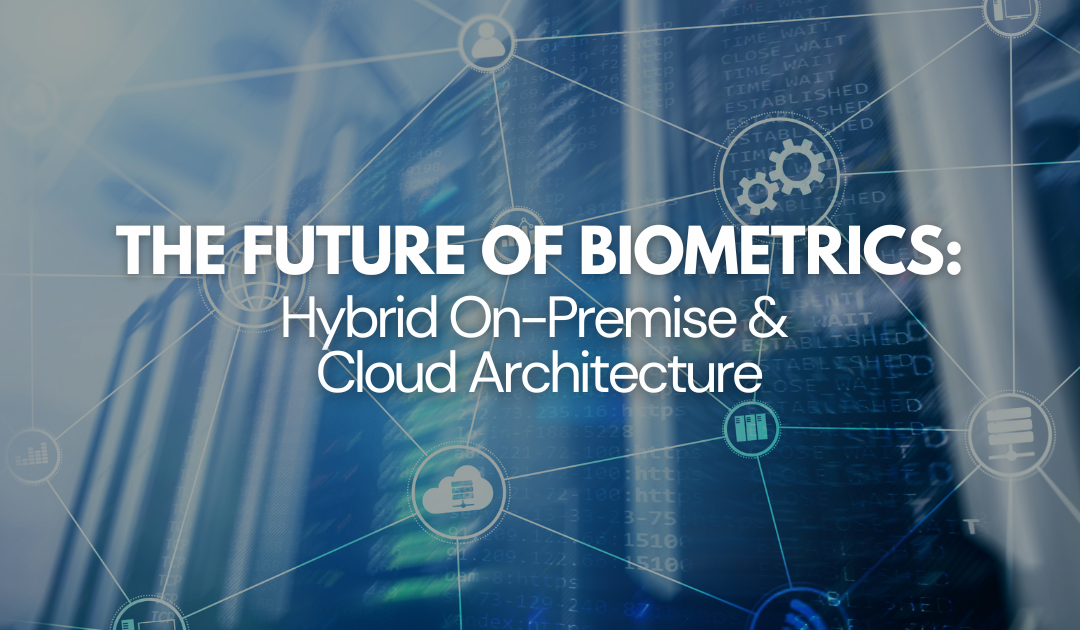Co-written with Edsel Shreve, General Manager, BioConnect AI
The majority of today’s biometric deployments are done in on-premise systems, which are servers installed and managed within the IT environment of the end user. However, more and more biometric solutions are moving towards a cloud-based architecture. Neither solution fully meets the diverse needs of end users, whose usage, deployment scale, and security requirements can vary greatly. Some will gladly move to a cloud architecture, while many continue to insist on an on-premise deployment.
But what if there was an architecture that combined the benefits of both on-premise and cloud solutions? This hybrid approach brings together the best of both worlds, offering organizations more flexibility, adaptability, and higher-functioning systems to protect their most secure locations.
Reasons for On-Premise Deployments
Many end users insist on on-premise systems for managing their biometric authentication systems for several reasons:
Security and Control
- Enhanced Security: Biometric data is highly sensitive and requires the highest levels of encryption and protection. On-premise systems keep this data under the end user’s control and behind their firewall.
- Privacy and Compliance: Policies often mandate full operational control of all biometric data.
- Integration: On-premise systems can integrate more easily and effectively with an organization’s Access Control Management system, which is typically also on-premise.
Scale
- Large Deployments: On-premise systems are necessary for end users requiring large-scale deployments while maintaining performance and control.
- Scalability Factors: These include the number of users, biometric templates, transaction volumes, and servers required based on these factors and regional IT best practices.
Reasons for Cloud Deployments
Cloud-based platforms can be more attractive for some organizations due to several factors:
Operational Efficiency
- No IT Management: There’s no need to manage servers or an IT environment.
- Frequent Updates: Systems can be updated more frequently to ensure the latest functionality.
- Quick Scaling: Cloud platforms can generally scale up quickly, making them attractive for smaller implementations.
Flexibility
- Adaptability: Users can make additions, changes, and reductions to their systems more flexibly.
- Ease of Transition: Users can move to a different solution or discontinue their biometric deployments more easily with a cloud platform.
- Cloud Integrations: As more Access Control platforms move to the cloud, integrations will be more efficient.
Is a Hybrid On-Premise/Cloud Architecture the Better Answer?
What if you didn’t have to choose between on-premise and cloud but could combine the best of both to achieve your biometric authentication goals? A hybrid system can offer just that.
On-Premise System
The main operational system would still be on-premise, providing:
- Full IT Control: Complete control over the IT environment and biometric data.
- Data Security: Enhanced security for biometric information and authentications.
- Integration: Tight integration with the access control system.
- Scalability: High scalability for large-scale environments.
- Compliance: Meeting privacy and compliance requirements.
Cloud Connection
Leverage the cloud for system and operational components without storing or moving any biometric information or PII to the cloud:
- Device Management & Data: Manage device age, firmware levels, and configuration requirements.
- Monitoring & Maintenance: Monitor software and systems, perform proactive maintenance, and track system health status and alerts.
- Performance Tracking: Track transaction successes, volumes, peak times, and hotspots.
- Software Updates: Stage and test new software releases before on-premise upgrades.
Both on-premise and cloud architectures have their merits. The future lies in leveraging the strengths of both to create a hybrid system that offers the best of both worlds. This approach allows organizations to take full advantage of the benefits each architecture provides, ensuring flexibility, security, and scalability for their biometric authentication needs.


